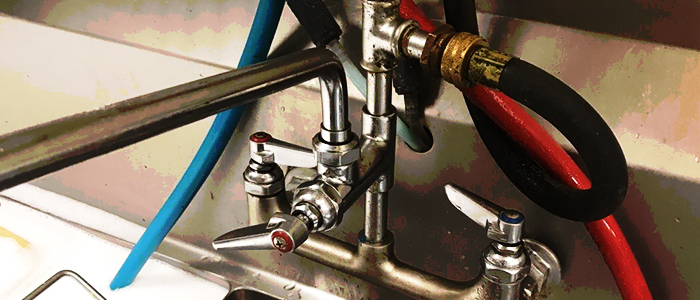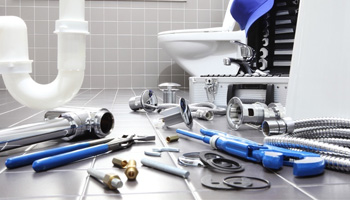On this page down the page you can get a lot of high-quality information all about The Inner Workings of Your Home's Plumbing.

Comprehending how your home's plumbing system works is crucial for every house owner. From supplying clean water for drinking, food preparation, and bathing to safely eliminating wastewater, a well-maintained plumbing system is vital for your family's wellness and comfort. In this extensive overview, we'll discover the elaborate network that comprises your home's plumbing and offer pointers on upkeep, upgrades, and dealing with usual problems.
Introduction
Your home's pipes system is more than just a network of pipes; it's an intricate system that ensures you have accessibility to clean water and effective wastewater removal. Understanding its elements and exactly how they interact can aid you prevent costly repair work and make certain everything runs smoothly.
Fundamental Parts of a Pipes System
Pipelines and Tubes
At the heart of your pipes system are the pipelines and tubes that lug water throughout your home. These can be constructed from numerous products such as copper, PVC, or PEX, each with its benefits in regards to durability and cost-effectiveness.
Fixtures: Sinks, Toilets, Showers, etc.
Fixtures like sinks, toilets, showers, and bathtubs are where water is used in your home. Understanding how these fixtures connect to the pipes system aids in detecting troubles and intending upgrades.
Shutoffs and Shut-off Factors
Valves manage the flow of water in your plumbing system. Shut-off valves are crucial throughout emergency situations or when you require to make repair services, enabling you to isolate parts of the system without interrupting water flow to the whole residence.
Water System
Key Water Line
The major water line links your home to the community supply of water or a private well. It's where water enters your home and is dispersed to different fixtures.
Water Meter and Stress Regulator
The water meter measures your water use, while a pressure regulator makes certain that water flows at a risk-free pressure throughout your home's pipes system, stopping damage to pipelines and components.
Cold Water vs. Warm water Lines
Recognizing the difference between cold water lines, which provide water straight from the main, and hot water lines, which carry warmed water from the water heater, aids in fixing and planning for upgrades.
Water drainage System
Drain Pipes Pipeline and Traps
Drain pipelines bring wastewater away from sinks, showers, and commodes to the drain or septic tank. Catches avoid sewer gases from entering your home and additionally trap particles that might cause obstructions.
Ventilation Pipelines
Ventilation pipelines enable air right into the drain system, preventing suction that can slow water drainage and trigger catches to empty. Correct ventilation is essential for preserving the honesty of your plumbing system.
Importance of Appropriate Drainage
Making sure proper drain stops backups and water damage. Regularly cleaning up drains and maintaining traps can avoid costly fixings and prolong the life of your plumbing system.
Water Furnace
Sorts Of Water Heaters
Water heaters can be tankless or typical tank-style. Tankless heating units warmth water on demand, while storage tanks save heated water for instant usage.
Updating Your Plumbing System
Reasons for Updating
Updating to water-efficient components or replacing old pipes can boost water quality, minimize water costs, and raise the value of your home.
Modern Plumbing Technologies and Their Benefits
Check out innovations like clever leakage detectors, water-saving toilets, and energy-efficient hot water heater that can conserve cash and reduce environmental effect.
Expense Factors To Consider and ROI
Compute the ahead of time costs versus long-term savings when considering pipes upgrades. Lots of upgrades spend for themselves through decreased utility expenses and fewer repair work.
Just How Water Heaters Attach to the Pipes System
Understanding exactly how hot water heater attach to both the cold water supply and warm water circulation lines helps in diagnosing problems like not enough hot water or leaks.
Maintenance Tips for Water Heaters
On a regular basis purging your hot water heater to eliminate sediment, inspecting the temperature settings, and examining for leaks can extend its lifespan and improve energy efficiency.
Common Plumbing Issues
Leaks and Their Causes
Leakages can take place as a result of maturing pipelines, loose fittings, or high water pressure. Addressing leakages without delay prevents water damages and mold and mildew development.
Blockages and Obstructions
Clogs in drains and commodes are usually brought on by purging non-flushable products or a buildup of grease and hair. Making use of drainpipe screens and being mindful of what goes down your drains pipes can stop blockages.
Signs of Pipes Issues to Look For
Low tide stress, sluggish drains, foul odors, or abnormally high water expenses are signs of possible pipes issues that should be addressed without delay.
Plumbing Maintenance Tips
Normal Evaluations and Checks
Set up yearly plumbing examinations to capture issues early. Seek indications of leaks, rust, or mineral buildup in taps and showerheads.
DIY Upkeep Tasks
Basic tasks like cleansing faucet aerators, looking for toilet leakages using color tablets, or protecting exposed pipelines in chilly environments can avoid significant plumbing concerns.
When to Call an Expert Plumbing
Know when a pipes issue calls for professional experience. Attempting intricate repairs without appropriate understanding can lead to more damages and greater repair work prices.
Tips for Reducing Water Use
Straightforward practices like taking care of leakages quickly, taking much shorter showers, and running complete loads of laundry and meals can preserve water and lower your utility expenses.
Eco-Friendly Pipes Options
Consider sustainable pipes products like bamboo for floor covering, which is durable and environmentally friendly, or recycled glass for counter tops.
Emergency situation Readiness
Steps to Take During a Pipes Emergency
Know where your shut-off shutoffs lie and how to shut off the water system in case of a ruptured pipeline or major leak.
Significance of Having Emergency Situation Calls Convenient
Keep contact info for regional plumbing technicians or emergency situation solutions conveniently offered for fast response during a plumbing crisis.
Ecological Impact and Conservation
Water-Saving Fixtures and Appliances
Setting up low-flow faucets, showerheads, and bathrooms can substantially reduce water usage without sacrificing performance.
DIY Emergency Fixes (When Applicable).
Temporary fixes like making use of air duct tape to spot a dripping pipeline or positioning a container under a leaking tap can decrease damages till a specialist plumbing professional gets here.
Verdict.
Comprehending the composition of your home's pipes system encourages you to preserve it successfully, saving time and money on repairs. By following routine maintenance routines and remaining educated regarding contemporary plumbing modern technologies, you can guarantee your plumbing system operates successfully for several years to find.
Exploring Your Homes Plumbing Anatomy
Water Supply System
Main Water Line: This is where water enters your home from the municipal supply or a private well. Water Meter: Typically located near where the main water line enters the property, it measures the amount of water used. Shutoff Valve: It s crucial to know where this is in case of emergencies. It allows you to turn off the water supply to the entire house. Pipes and Fittings: These distribute water throughout your home. Materials can include copper, PVC, or PEX. Drain-Waste-Vent (DWV) System
Drains: Located in sinks, showers, and tubs, these carry wastewater away. Traps: U-shaped pipes under sinks that hold standing water, blocking sewer gases from entering the home. Vents: Pipes that lead from the DWV system to the outside, preventing vacuum formation and allowing gases to escape. Sewer Line: Carries all wastewater from the home to the municipal sewer system or a septic tank. Fixtures and Appliances
Sinks, Toilets, and Showers Dishwashers and Washing Machines Water Heaters Maintenance Tips
Regularly check for leaks in exposed pipes and around fixtures. Inspect the water heater annually for signs of wear. Clean drains and traps to prevent clogs and odors. Know how to shut off water to individual fixtures. When to Call a Professional
Major leaks or burst pipes Installation of new pipes or fixtures Septic tank issues Remodeling projects that involve plumbing changes Conclusion
Understanding the anatomy of your home's plumbing is key to maintaining a functional and efficient system. Regular checks and knowing when to call in the experts can save you time, money, and stress.
https://www.mavyn.com/blog/exploring-your-homes-plumbing-anatomy

We hope you liked our excerpt on Understanding Your Home's Plumbing Anatomy. Thanks so much for spending some time to browse our short article. So long as you enjoyed reading our blog post if you please do not forget to pass it around. We thank you for reading our article about The Inner Workings of Your Home's Plumbing.
Browse Website